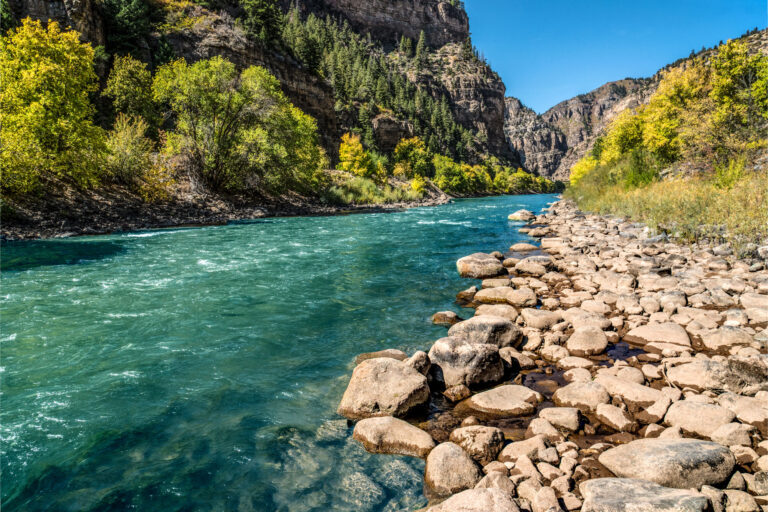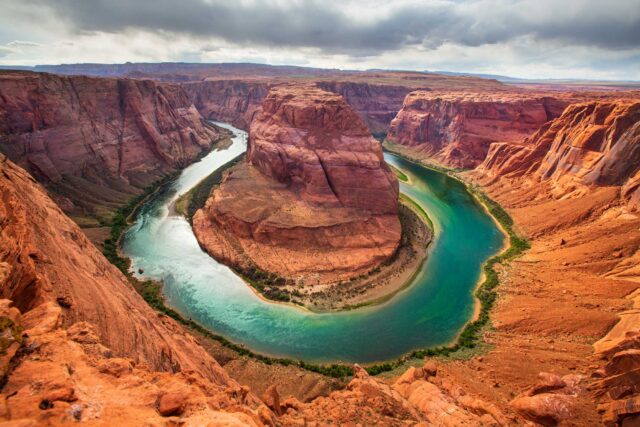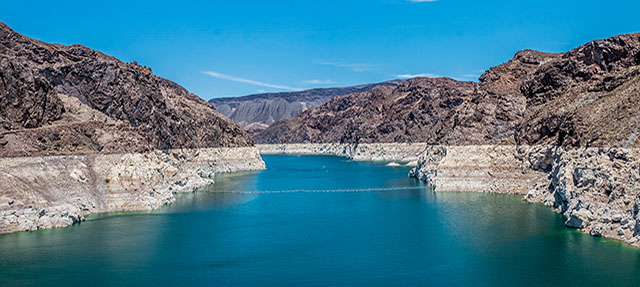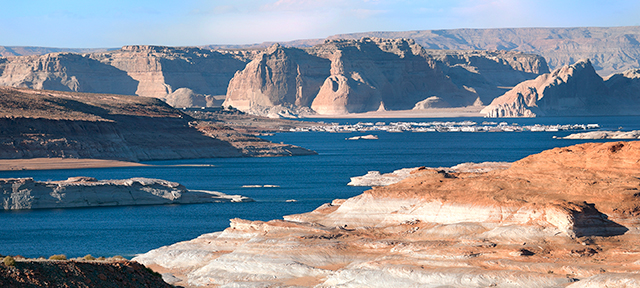Kristiana Hansen is an associate professor of agricultural and applied economics at the University of Wyoming. We spoke with her about an innovative pilot program that’s finding new ways to save water in a parched Colorado River basin.

How is climate change putting pressure on the Colorado River basin states?
So, we’re 20-plus years into a long-term drought in the Colorado River basin. Water levels in Lake Mead and Lake Powell are the lowest they’ve been since they were filled. Since 2007, there’s been a new framework to manage the reservoirs—and drought—given that there’s less water than expected. In addition to this new framework, the US Bureau of Reclamation also directed states to formulate drought contingency plans, which were finalized in 2019.
As part of these plans, four upper basin states (Colorado, Wyoming, Utah, and New Mexico) developed a demand management program to help conserve more water and store it in Lake Powell. The goal was to help meet their obligations to lower basin states (Arizona, California, and Nevada) under the Colorado River Compact, which stipulates that they must not deplete flows to downstream states below an annual average of 7.5 million acre-feet.
The upper basin states are experiencing a more intense version of what they’ve always had to deal with—how much water they get depends on annual variability in precipitation.
Can you tell us about the System Conservation Pilot Program (SCPP)?
The bureau and basin states undertook a pilot program from 2015–18 to see if upper basin water users would be willing to temporarily reduce their use in exchange for compensation—and they were! In fact, there was more demand for the program than there was funding.
Four suppliers covered the tab: Denver, Las Vegas, Phoenix, and California’s Metropolitan Water District. In Wyoming, Trout Unlimited helped ranchers apply for the program because they already had good working relationships with them. They wanted to retool irrigation infrastructure to improve fish passage, so they talked to ranchers, saying, “Here’s an opportunity to be compensated to use less water. We’ll help you fix your headgates so it’s easier to implement water conservation measures.”
In Wyoming, ranchers did a partial-season fallow: they irrigated normally until harvest, then turned off the water and didn’t turn it back on after cutting. The water they didn’t use would have otherwise supported livestock grazing and greater soil water content for the following spring.
In Wyoming, the folks who participated felt it was good for themselves and their communities. There were concerns about the impacts of fallowing on ecosystems and non-agricultural uses because flood irrigation creates wetland habitat for wildlife. At the same time, folks recognized that Trout Unlimited was helping ranchers improve fish passage, which was an environmental win.
What did we learn for the new 2023 edition of the program?
We learned that it was initially hard for ranchers to imagine a full-season fallow: they all did a split season. Full-season fallow was perceived as cutting too deeply into ranch operations. The pilot also gave agency folks responsible for estimating water use savings an opportunity to test various approaches. This time around, we’ll have more sophisticated measurement of net savings, and also perhaps greater recognition that saving more water can compromise ranch operations, which everybody up here would like to avoid.
During the pilot, policymakers and Wyoming’s agricultural community had questions about the economic impacts of a larger program. When ranchers grow less hay, that impacts local economies, depending on how ranch operations change in response. Do they stop exporting hay, import hay to maintain operations, or reduce herd size? We’re doing some studies on this and finding that herd reduction has the biggest local economic influence. In some parts of the upper basin, these types of impacts are leading to some pushback.
Also, there still are unresolved legal and technical issues around ensuring that conserved water gets from the point of foregone use (the place where it wasn’t used) down to Lake Powell.
Are there broader takeaways for stoking progress on Colorado River Basin management issues?
The big upper basin question for lower basin folks is evaporation: it’s 1.5 million acre-feet per year. For us in the upper basin, that number is mind-boggling. Of course, how water is used in the upper basin must be mind-boggling for the lower basin, because of the low-value agriculture up here.
What’s become quite clear in recent years is that everybody in the basin is interconnected. The system has a lot of pressures and demands on it from people and ecosystems. We’re increasingly recognizing how important it is to understand the different perspectives of people linked by hydrology and water rights.






